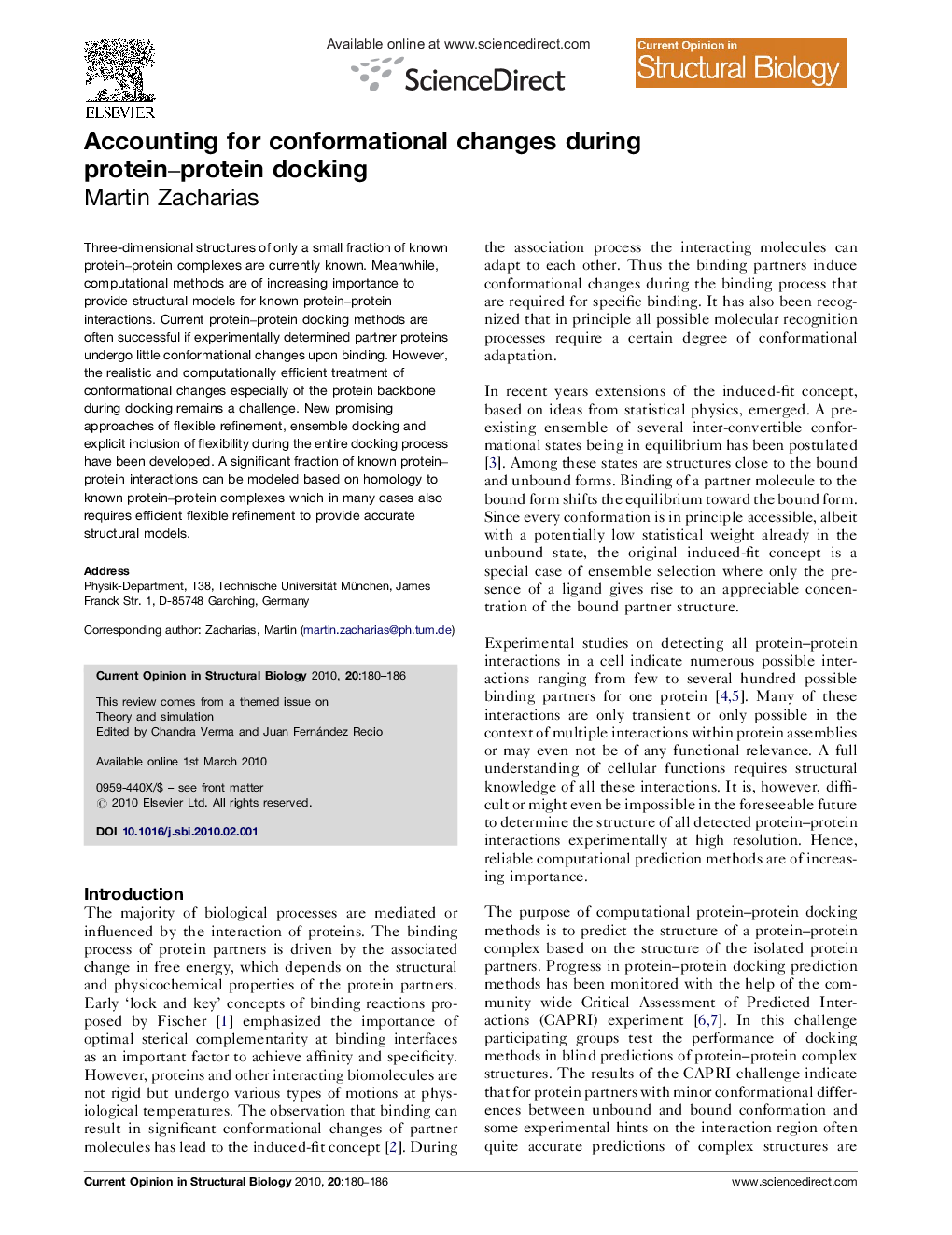| Article ID | Journal | Published Year | Pages | File Type |
|---|---|---|---|---|
| 1979782 | Current Opinion in Structural Biology | 2010 | 7 Pages |
Abstract
Three-dimensional structures of only a small fraction of known protein-protein complexes are currently known. Meanwhile, computational methods are of increasing importance to provide structural models for known protein-protein interactions. Current protein-protein docking methods are often successful if experimentally determined partner proteins undergo little conformational changes upon binding. However, the realistic and computationally efficient treatment of conformational changes especially of the protein backbone during docking remains a challenge. New promising approaches of flexible refinement, ensemble docking and explicit inclusion of flexibility during the entire docking process have been developed. A significant fraction of known protein-protein interactions can be modeled based on homology to known protein-protein complexes which in many cases also requires efficient flexible refinement to provide accurate structural models.
Related Topics
Life Sciences
Biochemistry, Genetics and Molecular Biology
Biochemistry
Authors
Martin Zacharias,
